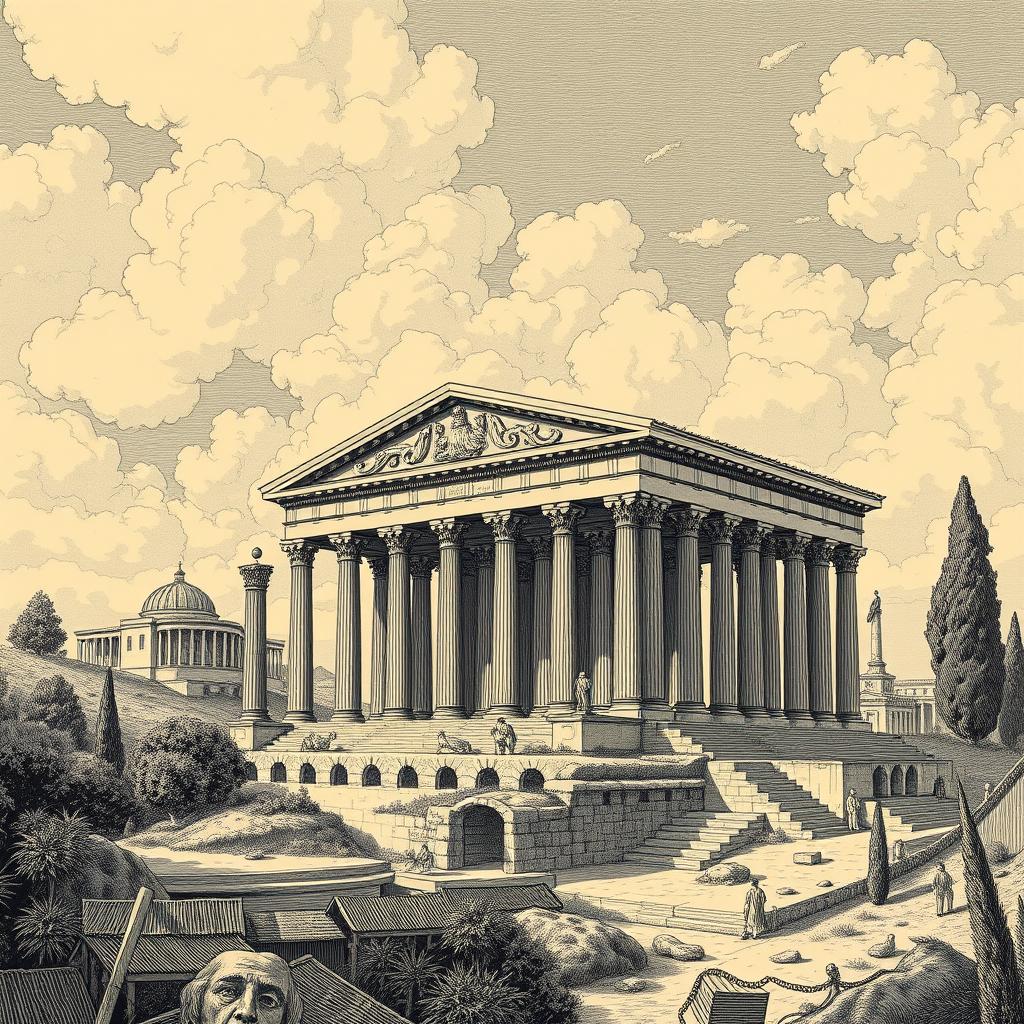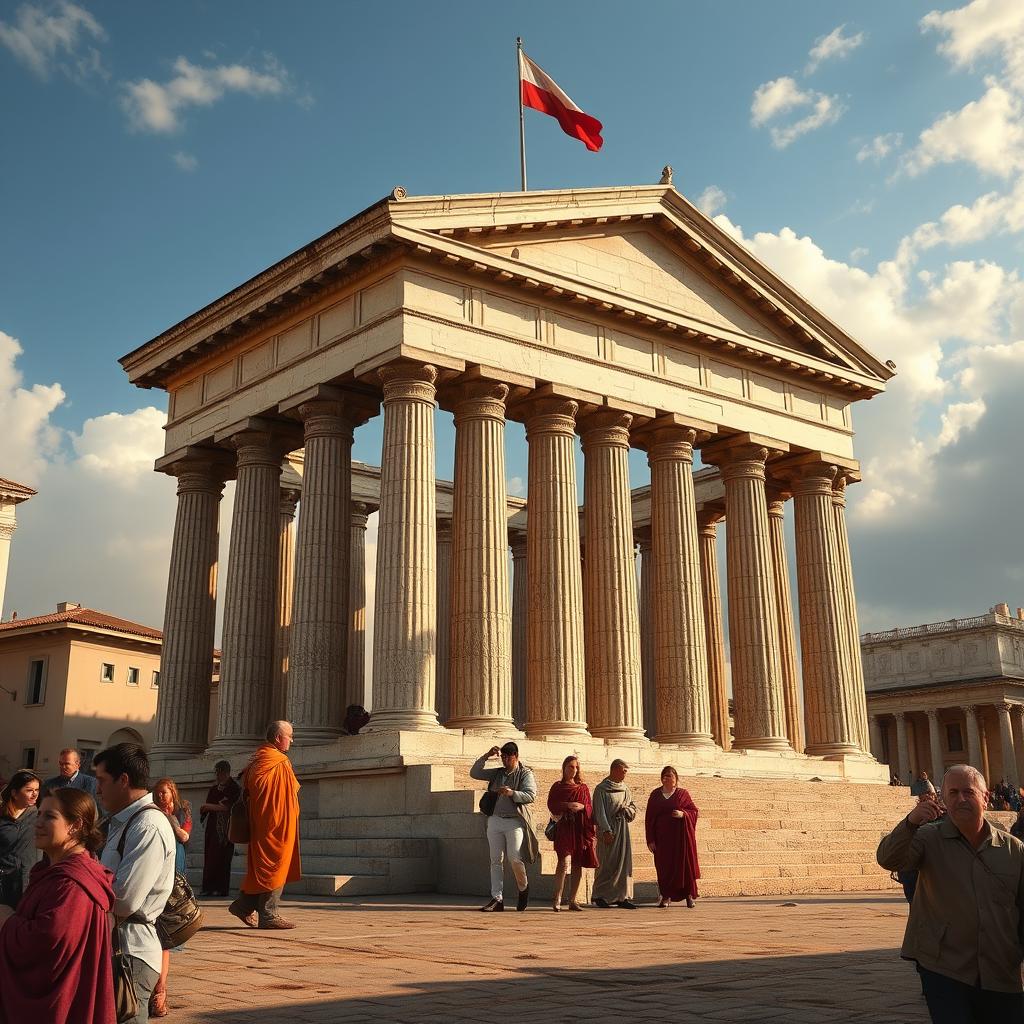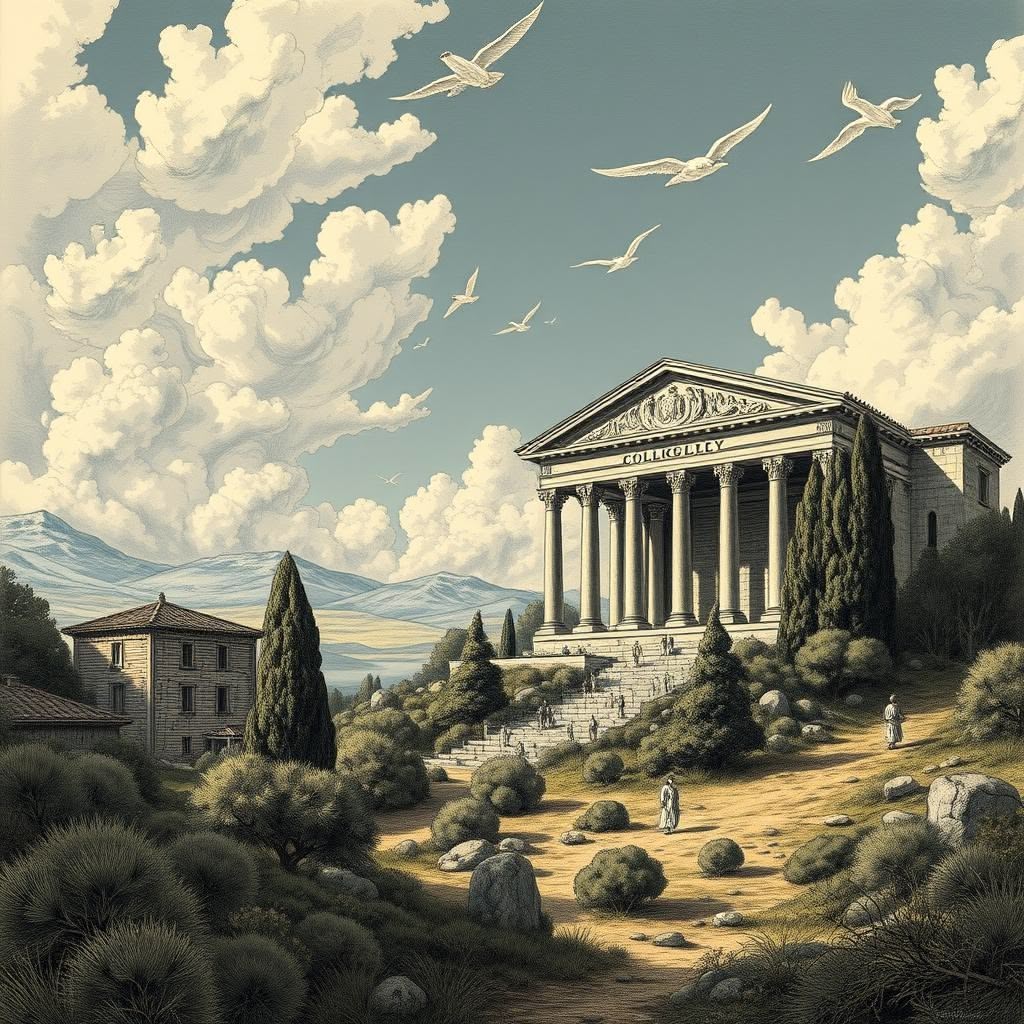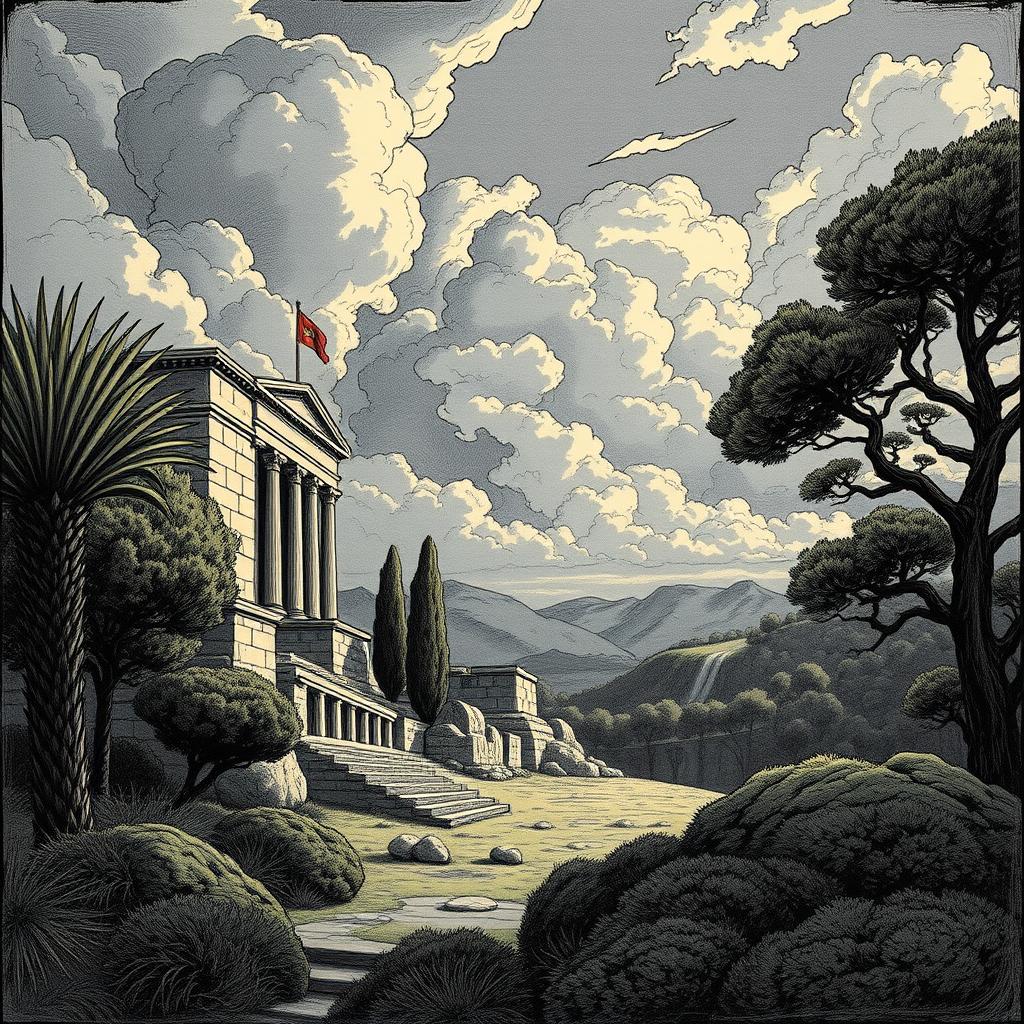When Rome’s Ghost Haunts Modern Democracy
The American Capitol under siege. Authoritarian leaders dismantling independent courts. Electoral systems undermined by misinformation. As democratic institutions worldwide face their most significant stress test since the 1930s, we’re witnessing the consequences of ignoring history’s most valuable political lessons.
More than two millennia ago, the Roman Republic engineered a governance system with sophisticated safeguards against precisely the democratic vulnerabilities now threatening modern nations. Their political architecture wasn’t perfect—the Republic eventually fell—but its constitutional guardrails successfully preserved balanced governance for nearly five centuries, far outlasting most modern democratic experiments.
The contrast is striking. Today’s democracies implement piecemeal protections while Rome built comprehensive, interlocking safeguards against power concentration. Constitutional scholar Mary Beard notes, “The Romans weren’t just concerned with creating checks and balances—they obsessively engineered redundant protective mechanisms, assuming ambitious men would eventually find loopholes in any single constraint.”
Current democratic crises—from executive overreach to eroding institutional independence—weren’t inevitable. They represent failures to implement proven protective measures that Romans understood were essential for maintaining the delicate balance between governmental effectiveness and freedom from tyranny.

The Fatal Flaw in Modern Executive Power
Modern democracies place extraordinary power in single executives—presidents, prime ministers, chancellors—creating a constitutional vulnerability the Romans specifically engineered against. Their solution? The dual consul system—perhaps Rome’s most distinctive and ingenious contribution to governance theory.
Rather than one chief executive, Rome elected two consuls who served simultaneously with equal power and—critically—mutual veto authority. Each consul could block the other’s decisions with a single word: “intercedo” (I intercede). This system made unilateral executive action nearly impossible while maintaining decisive leadership when both consuls agreed.
Historian Edward Watts, author of “Mortal Republic,” explains: “The consul system institutionalized opposition. By forcing collaboration between political rivals, Rome created a system where compromise wasn’t just encouraged—it was structurally required for governance to function.”
Imagine the practical implications in modern contexts. A U.S. president couldn’t unilaterally withdraw from international agreements if co-executive approval were required. Hungarian Prime Minister Viktor Orbán couldn’t have systematically dismantled judicial independence facing a co-executive with veto power. The Roman system fundamentally prevented executive branch capture by requiring consensus at the highest level.
The consul arrangement also solved another problem plaguing modern democracies: the winner-takes-all mentality. When electoral victors can implement their agenda without compromise, polarization intensifies. Rome’s system structurally required power-sharing regardless of electoral margins, creating institutional incentives for moderation.

Term Limits: Rome’s Temporal Firewall
Perhaps no Roman safeguard would more profoundly transform modern democracy than their strict term limit system. Where modern democracies often permit unlimited consecutive terms or merely limit single offices, Rome implemented comprehensive restrictions that prevented power consolidation through time.
Consuls served precisely one year. Period. This wasn’t merely a single-office restriction—the cursus honorum (course of honors) strictly regulated how citizens could progress through Rome’s political system with mandatory waiting periods between offices. After serving as consul, a Roman had to wait ten years before seeking the same position again.
This temporal firewall against power accumulation stands in stark contrast to modern systems that permit decades-long tenure in powerful positions. Consider Russia’s Vladimir Putin, who has effectively maintained executive control for over twenty years through constitutional manipulation, or Hungary’s Orbán with his continuous twelve-year rule. Even democratic leaders like Germany’s Angela Merkel (16 years) or Turkey’s Recep Erdoğan (20+ years between mayorship and presidency) accumulated power through extended tenure that Romans would have found dangerously incompatible with republican governance.
“The Romans understood that familiarity breeds power,” explains political scientist Sarah Thomsen Vierra. “When a leader remains in office for extended periods, institutional knowledge, bureaucratic relationships, and personal networks become power tools nearly impossible for democratic systems to counterbalance.”
The practical implications of Roman-style term limits would be transformative. The revolving door of leadership prevented personal fiefdoms within institutions. Policy became something larger than personality. Most critically, genuine alternation of power was built into the system’s foundation rather than dependent on electoral outcomes.

Strict Separation of Military and Civil Authority
Modern democracies pay lip service to civilian control of military forces while structurally combining civil and military authority in dangerous ways. The Roman Republic, drawing painful lessons from its monarchy period, created institutional firewalls between these powers that would significantly strengthen today’s vulnerable democracies.
The Romans established the pomerium—a sacred boundary around Rome—within which military command (imperium militiae) was suspended. Generals surrendered their authority upon crossing this line, immediately reverting to civil status. Armies could not legally enter the city, and political leaders inside the boundary could not command military forces.
This physical and legal separation created a buffer zone between political and military power that prevented precisely the type of constitutional crisis that occurred during January 6th events in Washington. The delayed National Guard deployment highlighted the dangerous ambiguity in American command structures during domestic emergencies.
Roman clarity would have prevented such confusion. As historian Adrian Goldsworthy writes, “The Romans didn’t just separate powers on paper—they created physical spaces where certain types of authority simply could not exist. A general approaching Rome with his army would literally leave his military authority at the city boundary.”
Beyond emergency scenarios, the Roman system prevented the gradual militarization of civil leadership. Modern executives routinely appear in military contexts, review troops, and claim direct command authority—symbolic actions that would have horrified Romans as dangerous blending of distinct power spheres.
The practical application of Roman-style separation would transform modern democratic vulnerabilities. Military deployment for domestic purposes would require structured civilian approval processes rather than executive discretion. The commander-in-chief concept would be significantly constrained by institutional limitations, and the military would operate in a sphere distinctly separated from domestic politics.

Emergency Powers with Built-In Expiration
Democratic backsliding often begins with legitimate emergencies that create justification for expanded executive powers—powers that mysteriously remain long after the crisis passes. The Roman Republic’s emergency powers system offers a sophisticated alternative that would have prevented many modern democratic erosions.
Rome’s dictatorship was a temporary constitutional office with extraordinary but strictly limited powers. Unlike modern emergency declarations that often lack clear sunset provisions, the Roman dictator served a maximum six-month term regardless of whether the emergency continued. More importantly, the dictator was nominated by consuls and confirmed by the Senate—not self-appointed or determined by the emergency itself.
This system stands in stark contrast to modern emergency powers that often rely on the executive branch to both declare and end states of emergency. From Hungary’s COVID-19 emergency laws granting Orbán indefinite rule-by-decree powers to the hundreds of zombie emergency declarations lingering in the United States (some dating back decades), modern systems lack Rome’s strict temporal constraints.
“The Romans designed their emergency powers with the assumption that anyone granted such authority would try to extend it,” notes constitutional scholar Tom Ginsburg. “Modern systems naively assume good faith in relinquishing emergency powers, where Romans built automatic expiration into the system’s architecture.”
The practical applications would transform modern governance. Emergency powers would automatically expire after predetermined periods, requiring new authorization rather than continuing by default. The authority to declare emergencies would be separated from the authority to exercise emergency powers. Most importantly, extraordinary powers would be granted to temporary offices rather than permanently expanding existing executive authority.
The Tribune’s Veto: Institutionalized Protection for the Vulnerable
Modern democracies struggle to protect marginalized populations against majoritarian pressures. The Roman Republic developed a remarkable institution that would significantly strengthen democratic inclusivity today: the Tribune of the Plebs.
Tribunes were sacrosanct officials elected exclusively by common citizens with extraordinary veto power over virtually any government action. Their sole constitutional purpose was protecting ordinary citizens against governmental overreach. A Tribune could block legislation, stop a trial, veto magistrate actions, or intervene in almost any official proceeding with a single word: “veto” (I forbid).
This institutional protection for vulnerable populations contrasts dramatically with modern systems that rely primarily on judicial review—a slow, reactive process that requires resources to access. The Tribune provided immediate, proactive protection for common citizens with no cost barrier.
“The Tribune system was revolutionary,” explains political scientist Melissa Lane. “Rome created a constitutional officer whose explicit job was saying ‘no’ to the government on behalf of ordinary people. Modern democracies have nothing comparable in structural power or accessibility.”
Implementing Tribune-inspired protections would transform modern democratic vulnerabilities. Designated officials with specific mandates to protect vulnerable groups could intervene in real-time against policies harming their constituencies. Unlike ombudsmen with merely advisory capacity, these officials would wield genuine veto authority, forcing government accommodation of marginalized interests.

Systematic Prevention of Power Concentration
Beyond specific institutions, the Roman Republic maintained a sophisticated understanding of power dynamics that modern democracies could learn from. Their system operated on a fundamental assumption modern constitutions often overlook: power naturally concentrates unless systematically prevented.
Rome implemented numerous overlapping constraints against power consolidation. Collegiality principles required multiple officials at nearly every level of government. The cursus honorum prevented rapid advancement through offices. Strict term limits and cooling-off periods restricted how quickly anyone could accumulate authority. Different electoral systems for different offices prevented any single base from controlling all institutions.
This systematic approach contrasts sharply with modern democracies that often rely on single-point protections vulnerable to coordinated circumvention. The U.S. Constitution’s checks and balances, while innovative for their time, create far fewer structural obstacles to power concentration than Rome’s overlapping systems.
Historian Michael Fontaine observes: “Rome didn’t just separate powers—they fragmented, duplicated, temporally constrained, and structurally balanced authority at every level. Modern systems typically lack this defense-in-depth approach to power constraint.”
The practical implementation of Rome’s power diffusion principles would significantly strengthen democratic resilience. Offices would be redesigned with collegiality requirements. Electoral systems would be diversified to prevent single-faction capture across institutions. Term limits would apply comprehensively rather than office-by-office. Most importantly, constitutional design would proceed from the assumption that power will concentrate unless specifically prevented by multiple redundant safeguards.
The Way Forward: Learning from Rome’s Fall
The Roman Republic eventually collapsed despite its sophisticated safeguards. This historical reality offers a final, crucial lesson: democratic protections require constant renewal and adaptation. The Republic’s fall came not primarily from design flaws but from failure to evolve as conditions changed.
Rome’s expansion created wealth disparities and military requirements that strained republican institutions designed for a smaller, more homogeneous society. As economic inequality grew and military commitments expanded, constitutional norms eroded before the formal system collapsed.
Modern democracies face similar adaptation challenges. Globalization, technology, and economic transformation create governance pressures our constitutional systems weren’t designed to handle. Rather than clinging to increasingly strained existing frameworks, we must learn from both Rome’s ingenious protections and their eventual failure to adapt.
Political scientist Francis Fukuyama notes: “Democratic systems must evolve or perish. The Romans created remarkable innovations for their era but failed to adapt them as their society transformed. Today’s democracies face the same existential challenge.”
The path forward requires both implementing Rome’s proven safeguards and improving upon them for modern contexts. Dual executive systems could be reimagined for contemporary governance. Term limits could be comprehensive while allowing for necessary expertise. Emergency powers could incorporate automatic expiration while maintaining response capability. The Tribune concept could be reimagined to protect vulnerable populations in diverse societies.
Revitalizing Democracy Through Ancient Wisdom
Today’s democratic vulnerabilities aren’t inevitable—they’re the consequence of failing to implement governance protections the Romans understood over two millennia ago. The Republic’s sophisticated safeguards against power concentration, temporal overreach, and minority exploitation offer proven solutions to our most pressing democratic challenges.
Modern constitutionalism has focused primarily on limiting government intervention in private affairs while often neglecting the Roman preoccupation with preventing power concentration within government itself. This oversight leaves contemporary democracies vulnerable to precisely the erosion patterns the Romans engineered against.
The Roman example demonstrates that properly structured democratic systems can maintain both governmental effectiveness and freedom from tyranny across centuries—but only with appropriate constitutional architecture. Their sophisticated balance of powers, temporal constraints, and institutional protections provides not just theoretical inspiration but practical governance models adaptable to modern contexts.
As we confront democratic erosion worldwide, Rome’s ghost offers both warning and wisdom. The Republic ultimately fell, but its constitutional innovations preserved liberty and self-governance for nearly five centuries—a track record modern democracies have yet to match. By rediscovering and reimplementing Rome’s political safeguards, we can build more resilient democratic systems capable of withstanding the challenges of our age.
The Romans understood something we’ve forgotten: democracy isn’t just about voting rights or civil liberties—it’s about structurally preventing power concentration through sophisticated, redundant constitutional architecture. Until we relearn this lesson, our democratic experiments will remain vulnerable to the very threats that Romans engineered against over two thousand years ago.

